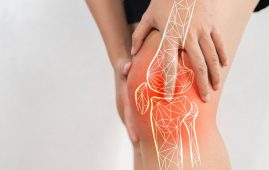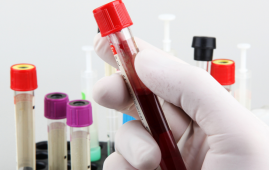

One of the top causes of death among young people worldwide is tuberculosis. Modeling studies indicate that the sick youngster did not receive treatment in over 96% of the fatal cases involving children under the age of 15.
This pattern might be reversible thanks to two new evidence-based algorithms for pediatric TB diagnosis.
Scientists from the Yale School of Public Health headed the group that created algorithm-based scoring systems that medical professionals can use to guide their judgments when making the disease’s diagnosis, which is frequently challenging in clinics with limited resources.
The Yale team, in collaboration with a global network of scientists, looked at data from more than 4,000 children with TB from across the world and, through statistical analysis, developed what they say are the most robust algorithms yet for pediatric tuberculosis.
As a result of the team’s analysis, the World Health Organization now recommends the use of algorithms in its latest consolidated guidelines for treating the disease. The WHO is also encouraging the use of the Yale-led research team’s algorithms.
“It’s a lot of pressure for these health care workers to consider vague symptoms and make a diagnosis for TB, which might partly explain why we have gaps in treating TB in young children,” said Kenneth Gunasekera, a Yale M.D.-Ph.D. student who was first author on the study. “Our work was motivated by this issue. We wanted to support health care workers operating in resource-limited settings to make treatment decisions for TB that are evidence-based.”
The findings appear in The Lancet Child & Adolescent Health.
The use of algorithms in pediatric TB is not new. Similar algorithms have been developed by other scientists to improve disease diagnosis, however, Gunasekera noted that these algorithms mostly depended on expert opinion rather than a careful analysis of the data. However, Gunasekera noted that several of the evidence-based algorithms were developed using data from a tiny sample size, which may have limited their capacity to be generalized. With the support of suggestions from a group of WHO-identified experts, Gunasekera’s team aggregated data from 4,718 youngsters from 13 research and 12 nations in an effort to create more reliable scoring systems.
Depending on the ability of medical professionals to collect chest X-rays for their patients, the researchers developed two algorithms. For their presenting symptoms and other information, patients earn a certain number of points in both algorithms, which staff then add up to determine the suggestion. On average, 85% of children with TB will receive a proper diagnosis if the score is higher than 10. (Patients who were aware they had been exposed to tuberculosis while having other symptoms may receive a score above 10)
“Now we have a tool that is evidence-based and pragmatic in that it’s easy for a health care worker to implement this score,” Gunasekera said. The team hopes the new tool will result in more children receiving timely treatment for TB.
However, the researchers point out that their rating systems have some drawbacks. Most crucially, the team was unable to properly test the algorithms prior to the publication of their research. But, research to assess the algorithms’ ability to detect tuberculosis in the actual world will soon be underway. Also, even while using data from several studies might enhance statistical analysis and produce more reliable data sets, different inclusion criteria and research definitions may cause data to be significantly skewed. Furthermore, because tuberculosis is already challenging to diagnose, some erroneous results “may arise,” according to the study’s authors. The new algorithms would likely benefit from additional data and improved diagnostic methods, as well as an additional study into pediatric tuberculosis.
Still, Gunasekera explained, the fact that the WHO conditionally recommended the use of algorithms in assisting with pediatric tuberculosis diagnosis and encouraged the Yale-led team’s new algorithms for use in the field stands as a powerful encouragement for future research.
“I’m really looking forward to seeing the results of the prospective evaluation of these algorithms when others are actually going to use them in a study set to aid in treatment decision-making for children being investigated for TB,” he said. “We built the algorithms based on evidence, but it will be exciting to see how well they will actually perform.”
The research carries a personal resonance for Gunasekera, who is in the last year of his M.D.-Ph.D. program at Yale and hopes to work in pediatrics after graduation. The project emerged from valuable mentorship with leaders at YSPH and beyond, he said.
“Through this work, I got to work closely with some of the leaders in the pediatric TB field, and it was honestly such a delight to be working with so many of the people whose papers I had been reading,” he said. “Now, the people whom I had idolized were people I was working with as colleagues. It was really an amazing opportunity and experience for me while trying to tackle this important problem in childhood TB and global public health.”
more recommended stories
 Parkinson’s Disease Care Advances with Weekly Injectable
Parkinson’s Disease Care Advances with Weekly InjectableA new weekly injectable formulation of.
 New Blood Cancer Model Unveils Drug Resistance
New Blood Cancer Model Unveils Drug ResistanceNew Lab Model Reveals Gene Mutation.
 Osteoarthritis Genetics Study Uncovers New Treatment Hope
Osteoarthritis Genetics Study Uncovers New Treatment HopeOsteoarthritis- the world’s leading cause of.
 Antibody Breakthrough in Whooping Cough Vaccine
Antibody Breakthrough in Whooping Cough VaccineWhooping cough vaccine development is entering.
 Scientists Unveil Next-Gen Eye-Tracking with Unmatched Precision
Scientists Unveil Next-Gen Eye-Tracking with Unmatched PrecisionEye-tracking technology has long been a.
 Men5CV: Hope for Ending Africa’s Meningitis Epidemics
Men5CV: Hope for Ending Africa’s Meningitis EpidemicsA landmark global health study led.
 Stem Cell Therapy Shows 92% Success in Corneal Repair
Stem Cell Therapy Shows 92% Success in Corneal RepairA groundbreaking stem cell therapy known.
 Gene Therapy for Maple Syrup Urine Disease
Gene Therapy for Maple Syrup Urine DiseaseResearchers at UMass Chan Medical School.
 How Fast Are Your Organs Aging? Simple Blood Test May Tell
How Fast Are Your Organs Aging? Simple Blood Test May TellNew research from University College London.
 HEALEY Platform Accelerates ALS Therapy Research
HEALEY Platform Accelerates ALS Therapy ResearchA New Era of ALS Clinical.

Leave a Comment